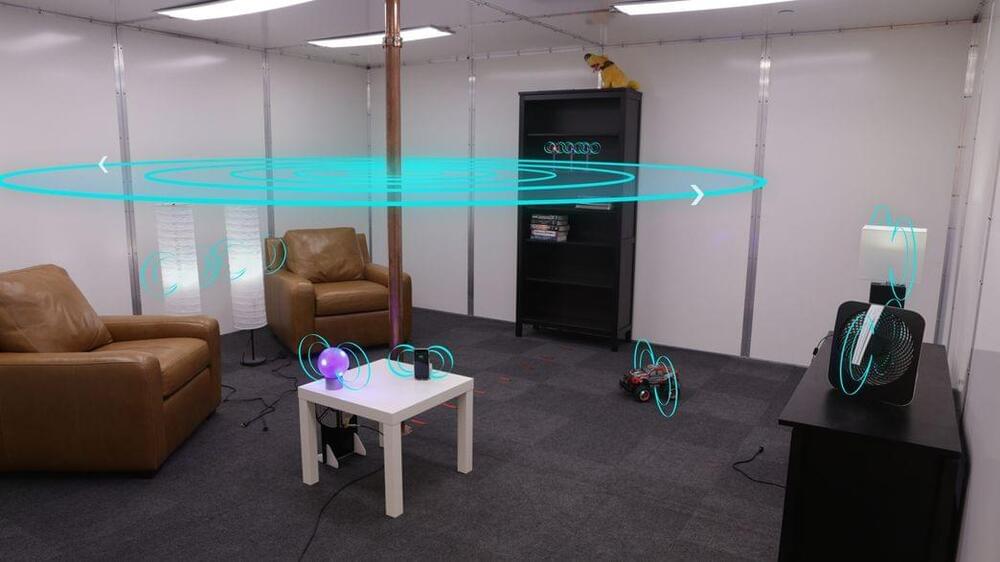Jan 6, 2023
Many Android phones to get satellite connectivity
Posted by Genevieve Klien in categories: mobile phones, satellites
When there is no mobile coverage, phones will be able to send emergency texts via satellite.
When there is no mobile coverage, phones will be able to send emergency texts via satellite.
Mental health has become a widespread topic nowadays.
In the past, discussions concerning mental health were often hushed up or altogether swept under the rug. A gradual cultural change has led to openly considering mental health issues and eased qualms about doing so in publicly acknowledged ways.
You might give some of the credit for this change in overarching societal attitudes as an outcome of the advent of easily accessed smartphone apps that aid your personal mindfulness and presumably spur you toward mental well-being. There are apps for mindfulness, ones for meditation, ones for diagnosing your mental health status, ones for doing mental health screening, and so on.
I had many ideas on how to improve Twitter, and a communication paradigm was one. The iPhone changed phones, and was a device. Twitter has no device to add to its portfolio. People have no desire to add products to Twitter portfolio to boost revenues. iPhone revenue surpassed computers, therefore it is very easy for Twitter to develop its portfolio to include better more reliable forms of revenue than advertising. A device can make a lot of money if it is a “paradigm” like an iPhone that completely changed our understanding of what a phone can be.
In 1943, Thomas Watson, the president of IBM, famously predicted the world market for computers would top out at “maybe five” of the machines. He was wrong – you likely have more than that in your own house, let’s face it – but at the time, it made sense. After all, if computers were still gigantic, vacuum-tube-powered addition machines, you probably wouldn’t want more than about five either.
It’s a similar story with holograms. Even back in the 1990s, more than 40 years after Dennis Gabor first came up with the idea of using wavefront interference to reconstruct images in three dimensions, science fiction was still assuming the need for entire decks and suites to power our holographic adventures.
Continue reading “You’ll Soon Be Able To Run Holograms On Your Smartphone” »

Mickey Mouse, Donald Duck, and… breakthroughs in wireless power transfer? Yep, scientists at a branch of the Walt Disney Company called Disney Research have found a way to charge devices on a room-scale without using any wires.
Wireless power is an idea that goes back to the 19th century, with Serbian-American inventor Nikola Tesla perhaps being its most famous proponent. But getting it to work has been a bit of a problem, with the extent of modern wireless power coming mostly in the form of electric toothbrushes or flat charging pads for phones.
Continue reading “Disney Researchers Make Wireless Power Transfer Breakthrough” »

In the midst of the Anti AI Art movement and the ever evolving complexity of the algorithms they are rallying against, this video essay discusses current flaws and future potential of AI Translation technology within Retro Game Emulation. Through rigorous testing of 3 games that never got localizations or fan translations (Tokimeki Memorial 2, Sakura Wars 2 & Boku No Natsuyasami 2), we will see how well Retroarch and ZTranslate’s AI Translator works for the average player. We will also discuss the ways in which this technology could one day be used in more formal localisations by professional teams, and wel will come to understand the nuances of the AI debate.
#AI #FanTranslation #Emulation.
Continue reading “Is AI Translation the Future of Video Games?” »

This portable unit needs less power to operate than a cell phone charger and could make it much easier for those in resource-poor areas to desalinate water.
Robots and autonomous cars will have eyes that see much more than the human eye is capable of, a review of the growing field of meta-optics has found.
Meta-optics is advancing science and technology far beyond the 3,000-year-old optical paradigm that we rely on for the visual human-machine interface, such as through cameras in our mobile phones, the lenses in microscopes, drones, and telescopes. Optical components are the technology bottleneck that meta-optics aims to transform, bringing the stuff of science-fiction stories into everyday devices.
The field, which blossomed after the early 2000s thanks to the conceptualization of a material with negative refractive index that could form a perfect lens, has grown rapidly in the last five years and now sees around 3,000 publications a year.
Microsoft has disclosed details of a now-patched security flaw in Apple macOS that could be exploited by an attacker to get around security protections imposed to prevent the execution of malicious applications.
The shortcoming, dubbed Achilles (CVE-2022–42821, CVSS score: 5.5), was addressed by the iPhone maker in macOS Ventura 13, Monterey 12.6.2, and Big Sur 11.7.2, describing it as a logic issue that could be weaponized by an app to circumvent Gatekeeper checks.
“Gatekeeper bypasses such as this could be leveraged as a vector for initial access by malware and other threats and could help increase the success rate of malicious campaigns and attacks on macOS,” Jonathan Bar Or of the Microsoft 365 Defender Research Team said.
Apple CEO Tim Cook has revealed that the iPhone has been using Sony camera sensors for the last 10 years.
While it’s not a well-kept secret that Sony provide Apple with sensor technology, Apple tend to keep tight-lipped about the specifics of hardware components that go into the iPhone.
Apple lists the megapixels, focal length, aperture, and other specifications; but doesn’t mention identifiable hardware components.
